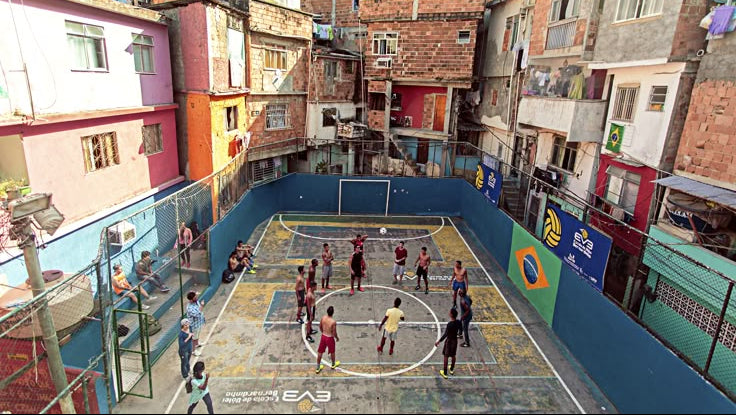From Favelas to the Cages: How Street Football Makes Legends

Before stadium lights and TV deals, football belonged to the streets. In São Paulo’s favelas, Lagos’ dusty pitches and London’s cage courts, magic happens with little more than a ball and a dream. These arenas forge creativity, resilience and flair – qualities money can’t buy.
Brazil’s beating heart
In the winding alleys of Rio’s favelas, children dribble past hanging laundry and barking dogs. The ground is uneven, the goals are makeshift, and the competition is fierce. It’s here that legends like Ronaldinho learned to control a ball in tight spaces, to improvise and to play with joy. The free‑flowing style we see on TV originates on slopes and cobblestones.
Europe’s urban cages
Move to Europe and the story shifts, but the ethos remains. In Paris’ banlieues, steel fences enclose small-sided pitches. The ball rebounds off walls faster than you can blink, forcing players to think ahead. In London, estates host midnight games under fluorescent lights, with grime tracks echoing off brick walls. It’s a culture of expression and competition, and is deep rooted in the DNA of Volta.
Africa’s take on street football is just as rich. In Lagos, kids weave through traffic cones made from old water bottles while car stereos blast afrobeats. The heat is punishing, the surfaces uneven, yet the energy is infectious. In Accra and Dakar, matches spring up on beaches at sunset; fishermen’s nets double as goalposts and the sound of waves accompanies every nutmeg. These environments cultivate toughness and improvisation — qualities that translate seamlessly onto bigger stages.
Why it matters
Street football produces fearless players who take risks and entertain. They develop close control, improvisational thinking and the ability to play under pressure. When they transition to professional academies, they bring a spark that can’t be coached in sterile environments.
What unites all these scenes is community. Street football is self‑organised and self‑policed; the players set the rules, enforce fouls and decide who stays on. There’s an unwritten code of respect: argue too much and you’ll lose your place; showboat without end product and you’ll be laughed off the court. It’s democratic in a way organised academies rarely are — you’re judged purely on your touch, vision and heart.
It’s also inseparable from music and style. On London estates, MCs freestyle on the touchline; in Rio, samba rhythms dictate the tempo; in Paris, trap beats echo off concrete walls. Players express themselves through more than just stepovers — they cut sleeves off jerseys, play in bucket hats or barefoot, and celebrate goals with dances borrowed from local clubs. That fusion of sport, sound and fashion is the essence Volta channels into its products and storytelling.
Why it matters
Street football produces fearless players who take risks and entertain. They develop close control, improvisational thinking and the ability to play under pressure. When they transition to professional academies, they bring a spark that can’t be coached in sterile environments.
Bringing street ethos to your training
-
Embrace chaos: set up small‑sided games with walls or boards to mimic cage environments. Let the ball ricochet unpredictably.
-
Encourage flair: allow players to try skills without fear of being shouted at. Celebrate nutmegs and cheeky passes.
-
Mix players: put kids of different ages and abilities together. Street football thrives on variety.
- The Cube: Use The Cube's 3 different targets for different competitions, with trick shots encouraged.
At Volta, we didn’t just design products; we bottled this street spirit. The Cube’s random rebounder section and target practice zones are direct nods to those back‑alley games. So while not everyone will make it to Maracanã or Wembley, anyone can harness the magic of the street.
Supporting that culture is part of our mission. We don’t just sell training equipment; we will be collaborating to host street tournaments, donate Cubes to underfunded youth centres and amplify stories from the streets. When we design gear, we test it in these environments first, as this is our way of honouring the street legends that make the game what it is.

